The Types of Diets We Support
Eat This Much supports almost any type of diet you can think of. Our goal is to help you eat the way you want, and in the right amounts, NOT to tell you the "right" way to eat.
We support a handful of preset diet types to configure the settings for you and make it quicker to get started. Here, we break down some basics about each diet type, but don't let these limit your imagination.

Not looking to read a wall of text? Just jump right in to the generator
The Diet GeneratorThe best diet is the one you will stick to. You will almost always lose weight if you eat fewer calories than you burn, and gain weight if you do the opposite. Different eating styles, however, can make it easier to reach your goals. Low carb eating styles such as Keto and Paleo can make it much easier to feel full, and thus eat fewer calories. But if you're good about controlling your portioning, it's less necessary to restrict your food choices, and you may have an easier time sticking to your plan.
Everyone is different, so the best thing you can do is experiment and see what works for you. Eat This Much is a tool to make the process easy.
What is the Ketogenic Diet Plan, and why would you want to follow it?
The keto diet plan has grown in popularity in recent years, and it's a low carb, high fat diet that involves putting your body into a metabolic state called ketosis. Ketosis happens when fat provides most of the fuel for the body and glucose is in short supply, and you end up with a high concentration of ketones in the blood.
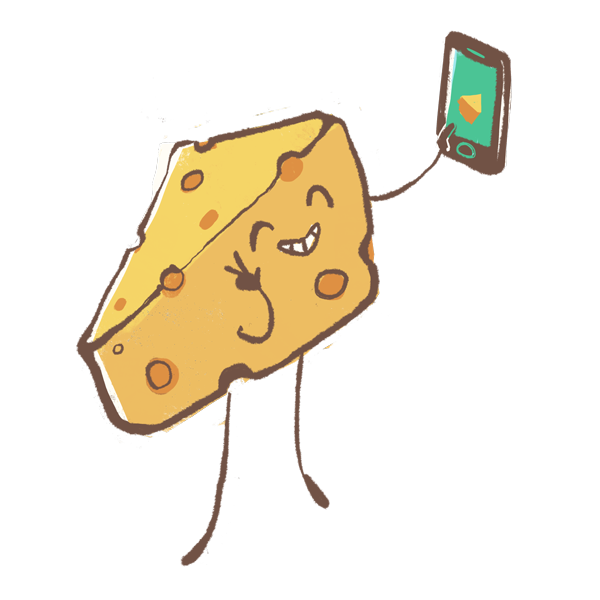
The ketogenic diet plan was created in 1924 to treat epilepsy, but other benefits include weight loss and reversal or control of Type 2 diabetes.
Outside of the keto diet, the recommended amount of daily carbohydrates is 200 to 300 grams, or 45% to 65% of an individual's daily macro intake. Carbohydrates are found in sugar, fruits, vegetables, fibers, grains and legumes. The keto diet plan turns these numbers on their head, instead making carbohydrate consumption a tiny part of the overall diet plan.
Ketosis occurs when eating about 20 to 40 grams of net carbs per day, although the precise amount will vary by the individual. This means excluding high-carbohydrate foods from your diet plan.
The appeal is obvious. To lose weight, we want to burn fat, and going into ketosis increases the efficiency at which your body burns fat for energy.
Types of ketogenic diet plans
While the keto diet plan is similar to the Atkins diet plan or other low-carb diet plans, it's specifically the act of forcing the body into ketosis that sets it apart. But, there are also multiple types of keto diet plans:
- Standard ketogenic diet plan: This diet plan typically contains macros of 70% fat, 20% protein and 10% carbs.
- Cyclical ketogenic diet plan: This diet plan involves cycling between keto and non-keto diet plans, such as five days on, two days off.
- Intermittent fasting ketogenic diet plan: This combines the keto diet plan with periods of calorie restriction in an effort to turbocharge weight loss and speed ketosis
- High protein ketogenic diet plan: Similar to the standard keto diet plan, but instead with about 60% of calories from fat, 35% from protein and 5% from carbohydrates.
Benefits of the Keto diet plan
There are many pros to the keto diet plan, but perhaps the best is that it allows for the eating of delicious, high-fat food while still losing weight. You don't have to turn your nose up at hearty foods like bacon, steak, eggs and cheese.
- Keto diet plans make you feel full and suppress your appetite. You might worry initially that a diet plan that allows for eating tons of bacon and cheese, foods heavily restricted on many diet plans. However, studies show that ketogenic diet plans suppress appetites by reducing hunger-stimulating hormones. Keto meals will help you feel full for longer, which leads to eating fewer calories over time.
- Other benefits of the keto diet plan that have been reported include a reduction in acne, reducing the risk of certain cancers, improvements to heart health, prevention of epileptic seizures, and polycystic ovary syndrome (PCOS) symptoms.
Cons of the Keto diet plan
- The early stages of the keto diet plan can cause what's known as the keto flu. These
symptoms can last from a few days
to a few
weeks and can include:
- Fatigue
- Nausea
- Headaches
- Constipation
- Vomiting
- Insomnia
- Dizziness
Some other side effects of the keto diet plan can include muscle cramps, bad breath, changes in bowel habits and lethargy. Monitoring your health on a keto diet plan is essential. While often highly effective, it's a bit more radical than a diet plan focused on just portion control.
- The keto diet plan isn't for everyone. People who should avoid the keto diet plan
include:
- Insulin-dependent diabetics
- Those suffering from bulimia, anorexia or other eating disorders
- Pregnant or breastfeeding women
- Individuals with kidney disease or pancreatitis
- It can be difficult to sustain the keto diet plan. Avoiding carbohydrates can lead to a feeling of food boredom. Not being able to eat what others in the workplace/household are eating can be tough. Also, keto diet plan followers will find there are lots of carbohydrates snuck into foods we eat on a regular basis. Luckily, as low-carb diet plans have grown in popularity, so have food offerings. Grocery stores now sell keto-friendly tortillas, microwave meals and more.
- Cost — The ketogenic diet plan excludes what is often the least-expensive portion of most meals. Rice and beans are very budget-friendly, but not keto-friendly. In the short-term, keto can be a more expensive diet plan option. However, the cost-savings of leading a healthier life down the road should not be discounted.
What types of foods are excluded from the keto diet plan?
In the Eat This Much meal planning app, foods excluded from the ketogenic diet plan include starchy vegetables, grains, and legumes.
High-carb foods most avoid on the ketogenic diet plan include:
- Grains, such as rice, pasta, bread, beer, crackers, cereal and tortillas (flour and corn)
- Starchy vegetables and high-sugar fruits, such as potatoes, corn, sweet potatoes, bananas, pears, mango, raisins, dates
- Sugar in any form: Honey, syrup, fruit juice
- Legumes and beans, including peas and lentils
- Milk - A single cup of milk has 12 grams of sugar.
Nutrition on the keto diet plan
The ketogenic diet plan is a high-fat, adequate protein and very low carb diet plan. It can be used to lose, gain or maintain weight. The amount of calories needed on a daily basis is specific to an individual, their activity level and their weight loss (or weight gain) goals. The recommended daily calories weight loss for someone who is 5'2” and 200 pounds will be radically different than for someone who is 6'1” and 500 pounds. While calories matter, hitting your nutrition macros will be a big part of the diet plan.
What are macros?
There are three food macronutrients — Carbohydrates, protein and fat.
- Proteins are often called the body's building blocks. They are used to build and repair tissues. They help you fight infection. Your body uses extra protein for energy. The protein foods group includes seafood, lean meat and poultry, eggs, beans and peas, soy products, and unsalted nuts and seeds. Protein is also found in the dairy group. Protein from plant sources tends to be lower in saturated fat, contains no cholesterol, and provides fiber and other health-promoting nutrients.
- Carbohydrates are the body's main source of energy. The fruit, vegetables, dairy, and grain food groups all contain carbohydrates. Sweeteners like sugar, honey, and syrup and foods with added sugars like candy, soft drinks, and cookies also contain carbohydrates. Try to get most of your carbohydrates from fruits, vegetables, fat-free and low-fat dairy, and whole grains rather than added sugars or refined grains. Many foods with carbohydrates also supply fiber. Fiber is a type of carbohydrate that your body cannot digest. It is found in many foods that come from plants, including fruits, vegetables, nuts, seeds, beans, and whole grains.
- Fats give you energy, and they help the body absorb certain vitamins. Essential fatty acids help the body function, but they aren't made by your body—you have to consume them. Many foods naturally contain fats, including dairy products; meats, poultry, seafood, and eggs; and seeds, nuts, avocados, and coconuts.
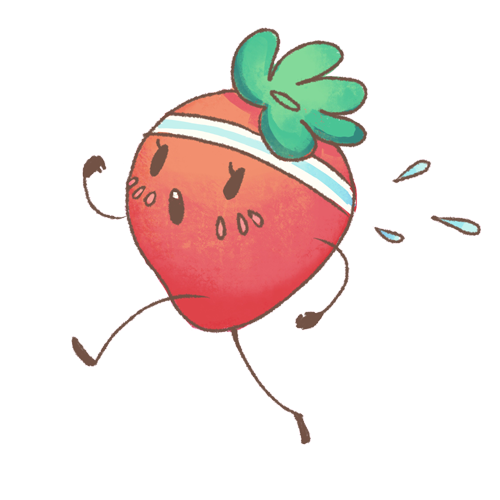
On the keto diet plan, you restrict your net carbohydrates (total carbs minus insoluble fiber) so that your body will switch from burning carbohydrates to burning fats as its primary source of energy. Eating too many carbs can kick your body out of ketosis.
Because you are restricting carbs, most of the energy you consume on a keto diet plan will be in the form of fat. Keep in mind that for weight-loss, the goal is to get the body to burn its own fat, so calories in/calories out still applies. A keto macro calculator can help you know how much of each to eat. A general rule of thumb is to keep net carbs at 20 to 30 grams daily.
Your protein macro should be considered a minimum target to reach, while your carbohydrate and fat macro should be considered an upper limit - don't go over, and lower is OK.
Here's a sample macro calculation for a 30-year-old man, weighing 6' tall, 300 pounds with a sedentary lifestyle who is looking to eat with a 20% calorie deficit:
- 2076 total kcals
- 145 grams protein
- 152 grams fat
- 32 grams net carbs
The caloric intake needs on keto diet plans will vary greatly depending on starting weight and activity level. The Eat This Much app can calculate diet plans for keto diet plan followers at any amount, per meal or per day, whether that's 500 calories, 3500 calories or any amount in between.
Keto-friendly foods & snacks
There's no need to get bored on a ketogenic diet plan. While starchy, high-carb foods are out, there is still a plethora of delicious options. It's even possible to maintain a keto diet plan as a vegetarian or vegan. Keto-friendly foods include:
Keto-friendly meats and proteins:
Keto-friendly fruits and vegetables
- Celery
- Avocados
- Spinach
- Radishes
- Bell peppers
- Broccoli
- Cauliflower
- Mushrooms (technically not a veggie)
- Cabbage
- Eggplant
- Asparagus
Keto-friendly dairy products
- Butter
- Full-fat sour cream
- Whipping cream
- Full-fat, unsweetened yogurt
- Cream cheese
- Cheese! Cheddar, mozzarella, swiss, parmesan, colby and more
Another keto-friendly food group is nuts and seeds, such as almonds, pecans, walnuts, sunflower seeds and pistachios, although as always, track carbohydrates.
What is the Vegan Diet Plan, and why follow it?
The primary definition of a vegan diet plan is one that avoids all animal-derived products. This includes not only beef, poultry, pork and fish, but also eggs and dairy products. The vegan lifestyle also includes not using any products made from animals, such as leather or fur.
Many people follow a Vegan Diet Plan for health reasons, seeking to eat more healthful foods. Others will follow a Vegan Diet Plan for ethical reasons, such as concerns over animal welfare. Whatever your reason for choosing a Vegan Diet Plan, EatThisMuch will help you find the perfect daily diet plan to follow.
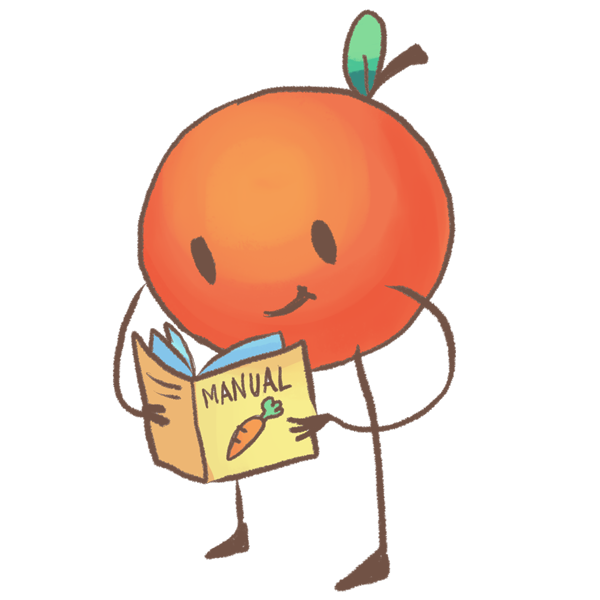
Pros & Cons of the Vegan Diet Plan
Benefits of the Vegan Diet Plan
A growing body of scientific evidence indicates that wholesome plant-based diets offer distinct advantages compared to diets containing animal-derived products.
The benefits of a Vegan Diet Plan come from lower intakes of saturated fat, cholesterol and animal protein as well as higher intakes of complex carbohydrates, dietary fiber, magnesium, folic acid, vitamin C and E, and other nutrients.
A balanced Vegan Diet Plan can provide all the nutrients a body needs to thrive. Nutritional deficiencies in Vegan Diet Plans are usually from poor planning. The EatThisMuch meal planner takes the guesswork out of crafting a Vegan Diet Plan, helping you craft a nutritionally complete meal.
Following a Vegan Diet Plan is beneficial in preventing and treating cardiovascular disease, hypertension, diabetes, cancer, osteoporosis, renal disease and dementia, as well as diverticular disease, gallstones and rheumatoid arthritis.
Many people also start a Vegan Diet Plan to lose weight. A vegan diet is also a lifestyle choice, but it is true that people who follow a Vegan Diet Plan are generally leaner than those who do not. Plant-based diets have been consistently associated with reduced body weight in a multitude of interventional trials.
Downsides of a Vegan Diet Plan
Cutting major food groups from the diet, such as meat, can make it harder to get all necessary nutrients. Whether you need a 1,500 calorie diet plan or 2,000 calorie diet plan, EatThisMuch will help you plan nutrient-rich, delicious meals that cover all the body’s needs. Meat, poultry and fish supply a lot of protein and omega-3 fatty acids. If you’re following a Vegan Diet Plan, nuts and seeds such as flaxseed, chia seeds and walnuts are a place to pick up that essential nutrient.
Consistently eating vegan meals can be difficult. You may be invited to a party, barbecue or restaurant where vegan options are limited or not as filling. Following a Vegan Diet Plan can require more planning and willpower than someone on an omnivorous diet plan.
You’re not guaranteed to lose weight simply by following a Vegan Diet Plan. Calories in, calories out still applies. A vegan diet can still be filled with excessive calories from sugar and fats. Our EatThisMuch meal planner will help you select a daily calorie intake level and then it will automatically generate Vegan Diet Plans under the calorie limit you set. Click here for a sample 1,500 calorie Vegan Diet Plan.
Staple foods on a Vegan Diet Plan
These days, vegan diets have gained significant popularity. Foods that adhere to a vegan
diet plan are everywhere. Home cooks who make vegan meals at home will often have
these staple foods at hand.
● Dried
lentils: Cheap, full of protein and other nutrients, dried lentils last
a long time in
your pantry. This budget-friendly staple doesn’t need to be
soaked and is great in soups
and curry.
● Brown rice
& quinoa:
Whole-grain rice and protein-rich quinoa make an unbeatable
combo.
● Avocados:
Avocados are full of healthy fats and add a ton of flavor to dishes.
● Beans:
Dried are best, but canned beans are a staple that can be easily tossed into
chilis,
soups or other meals. Beans are the vegetarian diet plan’s best friend.
●
Tomatoes:
A staple ingredient for Italian and many other dishes
● Coconut
milk: Very useful for making curries, soups and sauces, as well as
breakfast
smoothies.
● Tofu: A
soybean-based meat replacement, tofu absorbs the flavors of the dish and is
filled
with satisfying protein. Tofu can replace meat in many dishes, such as tacos,
chili,
stir-fry and more.
● Vegetables: It wouldn’t be a
vegan diet without these. Vegetables are delicious and
healthy, so load up on leafy
greens like kale and spinach,
broccoli, cauliflower,
carrots, brussel
sprouts, bell
peppers, squash
and more.
Foods to avoid on a Vegan Diet Plan
You’ll want to avoid all animal-derived foods. This includes not just meat, pork and poultry, like on a vegetarian diet plan, but also fish, eggs and dairy. Even honey is considered off-limits by most vegans. However, there are vegan sweeteners available such as maple syrup or molasses that can be used as a substitute.
If you’re on a vegan diet plan, you’ll have to be careful not to consume foods where such ingredients might be hidden, such as in breads or foods prepared by others. On the EatThisMuch meal planner, you can select a vegan diet plan, and then further customize your diet plan by including or excluding specific foods. By default, our vegan diet planner excludes all animal-based products.
Nutrition on a Vegan Diet Plan
The first step in dieting to lose, maintain or gain weight is to calculate your TDEE (total daily energy expenditure) based on your current weight and exercise level. If your body burns 2,000 calories a day, then consistently eating fewer calories than that will help you lose weight, and eating more calories will cause you to gain weight.
Food is divided into three main macronutrients, all of which contain calories: Protein, carbohydrates and fat. Every diet plan needs to have a suitable amount of each of these three macronutrients. For a Vegan Diet Plan, a realistic macro ratio is 25-30% protein, 40-45% carbohydrates and 30-30% fat.
A standard Vegan Diet Plan might include a diverse mix of whole grains, vegetables, fruit, plant-based protein and nuts and seeds.
What is the Paleo Diet Plan, and why follow it?
The paleo (short for paleolithic) diet plan is based on the idea that humans should eat food that closely resembles the diets of prehistoric humans. Early humans evolved as hunter-gatherers long before the invention of what we would recognize as modern-day agriculture. This diet plan attempts to recreate what humans ate from 2.5 million to 10,000 years ago, and eliminating foods that became popular after farming revolutionized what humans could eat.
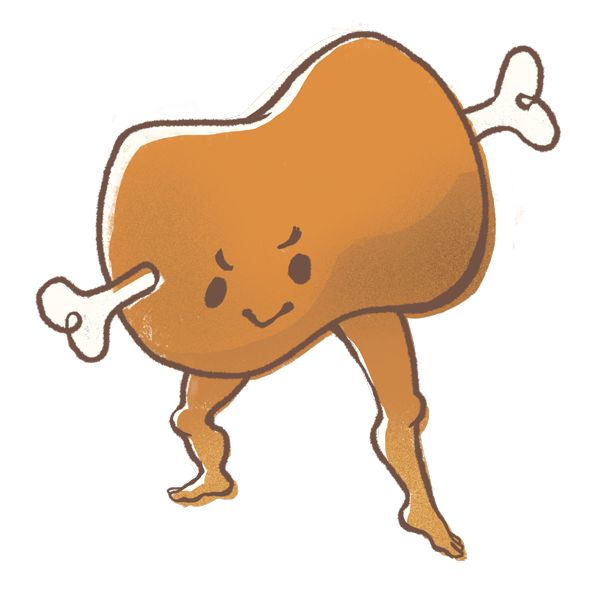
Proponents of the paleo diet plan believe that it’s healthier if humans ate more traditional staples of the human diet, such as meat, fruits and foraged vegetables, and less of the foods that only gained prominence after the emergence of agriculture about 10,000 years ago — so eating less grain, processed foods, legumes and the like. The appeal is that since the advent of agriculture there has been little time for core human metabolic processes to evolve — thus we should eat like cavemen.
As you can imagine, it’s pretty difficult to know exactly what humans across the world ate on a daily basis in prehistoric times, before even the concept of a written language existed. However, based on what we know about technology levels and archeological records, we can make some educated guesses that it was probably a diet filled with a lot of natural, minimally processed foods.
Staple foods and snacks on a Paleo Diet Plan
So what are considered the core foods of a paleo diet plan? In a nutshell, simple but nutritious foods. Some basic categories include:
- Nuts and seeds
- Vegetables
- Fish such as tuna, mackerel and salmon
- Oils derived from fruits and nuts, such as olive oil or walnut oil
- Fruits
- Meat, especially from grass-fed animals or game animals
- Eggs
Some more specific examples of foods that are OK for the paleo diet include:
- Turkey, quail, goose, chicken, and duck
- Beef, lamb, pork, nitrate-free bacon, elk, bear, deer, moose, and rabbit
- Catfish, tuna, salmon, trout, bass, walleye, mackerel, cod, clams, lobster, crab, mussels, and shrimp
- Nuts and nut butters, including almonds, cashews, hazelnuts, walnuts, and brazil nuts
- Eggs, preferably from free-range birds
- Healthy fats from sources such as avocados, olive oil, coconut oil, and butter/ghee from grass-fed cows
- Cauliflower, broccoli, lettuces, carrots, peppers, cucumber, radishes, squashes, olives, and mushrooms
- Apples, peaches, bananas, berries, melons, tomatoes
- Acceptable sweeteners would be from sources such as dates, maple syrup and raw honey
Foods to avoid on a Paleo Diet Plan
The ingredients to avoid on a paleo diet plan are all the foods that would only have been available in recent history to humans. These include:
- Grains, such as wheat, oats and barley (including whole grains and gluten-free), and their derivatives, like pasta and bread
- Dairy products
- Refined sugar, such as cane sugar, beet sugar and corn syrup
- Foods with lots of salt
- Potatoes, corn and rice
- Highly processed foods in general, such as soft drinks, vegetable oils, artificial sweeteners, margarine, trans fats, soybeans and soy-derived products
- Legumes, such as beans, peas and peanuts
- Beer, which is made from wheat, barley and hops (all on the paleo naughty list)
Pros & Cons of the Paleo Diet Plan
Benefits of the Paleo Diet Plan
Health experts like the paleo diet plan’s reduction in highly processed foods and refined sugars, and like that it’s high in fiber, potassium and antioxidants (such as found in vegetables, bananas, berries and fish).
The paleo diet plan has been found in some studies to be beneficial for those with or wanting to prevent Type 2 diabetes. One study found that a paleo diet plan improved blood-sugar levels and risk factors compared with a traditional diabetes diet plan. Another group of studies examined showed that a paleo diet plan compared similarly with other healthy, diabetic-friendly diet plans, such as the Mediterranean diet plan and a traditional diabetes diet plan. The paleo diet plan has also been found to be more satiating than other diet plans, meaning that people will consume fewer overall calories because they feel fuller and take longer to get hungry again.
One of the benefits of feeling satiated in a diet like the paleo diet plan is that it lessens the need for calorie counting and watching portion sizes. Some who follow the paleo diet plan also have a few “cheat” non-paleo meals each week.
Downsides of a Paleo Diet Plan
Some nutrition and health experts advise against eliminating entire categories of food from your diet, and say that the paleo diet plan’s blanket exclusion of dairy could put someone at risk of calcium and vitamin D deficiency. They also point to the healthfulness of whole grains to fuel the body and brain.
It can be difficult to stay committed to diets that are too restrictive, and people with heart, kidney, liver or pancreatic disease have been recommended to follow a paleo diet plan under medical supervision. Despite a fair number of celebrity endorsements of the paleo diet plan (such as by Lebron James and the entire Miami Dolphins football team), researchers warn about blindly following the latest often commercialized fitness fads.
Nutrition on a Paleo Diet Plan
The first step in dieting to lose, maintain or gain weight is to calculate your TDEE (total daily energy expenditure) based on your current weight and exercise level. If your body burns 2,000 calories a day, then consistently eating fewer calories than that will help you lose weight, and eating more calories will cause you to gain weight.
Food is divided into three main macronutrients, all of which contain calories: Protein, carbohydrates and fat. Every diet plan needs to have a suitable amount of each of these three macronutrients. According to a Harvard study of the paleo diet plan, a standard macronutrient ratio is 30% protein, 30% carbohydrates and 40% fat.
A standard Paleo Diet Plan includes nutrient-dense fresh foods and steers participants away from highly processed foods with lots of sugar, salt and unhealthy fats, which is definitely good, but it’s important to make sure certain vitamins and chemicals normally obtained from whole grains, dairy and legumes are still consumed.
What is the Mediterranean Diet Plan, and why follow it?
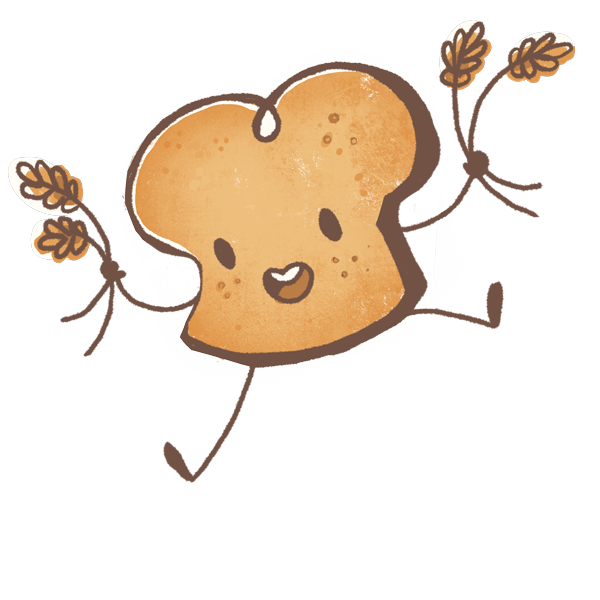
A Mediterranean diet plan is a generic term based on the traditional eating habits of countries near the Mediterranean Sea. These diet plans gained popularity because of the long, healthy lives often enjoyed by the region’s inhabitants, such as those in Italy and Spain.
There’s no standard Mediterranean Diet Plan as there are 16 countries that border the sea, with a wide variety of cultures, geography, agriculture and eating habits. However, there are some commonalities.
Staple foods on a Mediterranean Diet Plan
The general guidelines of a Mediterranean diet plan are:
- A large variety of whole grains, fruits and vegetables
- Healthful fats, such as those from nuts, seeds and olive oil
- Moderate amounts of dairy and fish
- Limited eggs
- Red wine, in moderation
According to the American Heart Association, a Mediterranean Diet often has a higher percentage of its calories coming from fat than a traditional diet plan. It’s also not uncommon for meals to be totally meatless, with vegetables, legumes and whole grains making up most of the meal.
A typical breakfast or snack on the Mediterranean Diet Plan might be avocado on whole-grain toast.
Foods to avoid on a Mediterranean Diet Plan
The foods to avoid a Mediterranean Diet Plan include, like virtually all weight loss plans:
- Refined grains, such as those found in white bread, white pasta, and white pizza dough.
- Refined oils, including canola and soybean oil.
- Foods with added sugars such as cake, doughnuts, soda and candy.
- Highly processed meats such as deli meats and hot dogs.
- Processed or packaged foods (crackers, chips and other snacks).
Pros & Cons of the Mediterranean Diet Plan
Benefits of the Mediterranean Diet Plan
Many follow a Mediterranean Diet Plan not just for weight loss but also for the supposed health benefits. A five-year New England Journal of Medicine study found that the Mediterranean Diet Plan reduced the risk of stroke, heart attack and death by 30% compared with a control group.
More research is necessary, but it is true that people in Mediterranean countries have heart disease at a lower rate than people in the U.S. Following the Mediterranean diet can also lead to more stable blood sugar and lower cholesterol.
Downsides of a Mediterranean Diet Plan
There aren’t many downsides to the Mediterranean Diet Plan. It provides for a recommended balance of macronutrients and is often recommended by doctors and health associations. Followers of the Mediterranean diet will want to make sure to get enough Vitamin C (to absorb iron) and calcium (because dairy is not a big part of the diet). Wine, especially red wine, is a common part of Mediterranean-style eating, but some people should not drink alcohol, and it should always be in moderation.
Nutrition on a Mediterranean Diet Plan
Following a Mediterranean Diet Plan involves making long-term, sustained dietary changes. Broadly, you should aim for a diet with lots of natural foods, including vegetables, fruits, whole grains and healthful fats. It’s also possible to do a vegetarian version of the Mediterranean Diet Plan by replacing animal protein with plant-based protein.
What is the Low Carb Diet Plan, and why follow it?

The Low Carb diet plan is exactly as it sounds — it limits carbohydrates, one of the three nutrition macronutrients, instead emphasizing protein and fat. There are many types of low-carb diet plans. Each has different guidelines for what foods to eat and how much of the diet should be carbs.
The main purpose of a Low Carb diet plan is weight loss, although some also might go onto the diet for the purposes of controlling Type 2 diabetes or metabolic conditions. You might also want to follow a Low Carb diet plan because you simply enjoy eating foods higher in protein and fats than carbohydrates.
There’s no fixed definition of what is or isn’t a Low Carb diet plan, and the total amount of carbs consumed daily will vary based on goals and preferences. Some examples of Low Carb diet plans are the Keto Diet Plan, Atkins Diet Plan, a Low-Carb Paleo Diet Plan, a Zero-Carb diet plan, and a Low-Carb Mediterranean Diet Plan.
One of the basic steps of any Low Carb diet plan, however, is to reduce the intake of high-carb foods such as grains, potatoes, sugary drinks and high-sugar junk foods. Studies have shown that Low Carb diet plans can help the heart, especially those who ate diets that were high in vegetable sources of fat and protein.
Another benefit of a Low Carb diet is the reduction of body fat. Your body digests carbs and turns them into blood sugar, which the body uses for energy. By eating fewer carbs, your body uses stored fat for fuel instead.
Staple foods on a Low Carb Diet Plan
So what are considered the core foods of a Low Carb diet plan? In a nutshell, it’s nutrient-rich foods that are high in protein and/or fats.
Low Carb-friendly foods & snacks
In general, a Low Carb diet plan will focus on proteins and non-starchy vegetables. Low Carb-friendly foods include:
Low Carb-friendly meats and proteins
Low Carb-friendly fruits and vegetables
- Celery
- Avocados
- Spinach
- Radishes
- Bell peppers
- Broccoli
- Cauliflower
- Mushrooms
- Cabbage
- Eggplant
- Asparagus
Low Carb-friendly dairy products
- Butter
- Full-fat sour cream
- Whipping cream
- Full-fat, unsweetened yogurt
- Cream cheese
- Cheese! Cheddar, mozzarella, swiss, parmesan, colby and more
Another Low Carb-friendly food group is nuts and seeds, such as almonds, pecans, walnuts, sunflower seeds and pistachios.
Foods to avoid on a Low Carb Diet Plan
The ingredients to avoid on a Low Carb diet plan are highly processed sources of fats and protein, and eating a smaller proportion of carbs.
Common sources of carbohydrates are:
- Grains
- Fruits
- Vegetables
- Milk
- Nuts
- Seeds
- Legumes (beans, lentils, peas)
- Beer
- Pasta
- Cookes, cake and other junk food
Complex carbs are digested more slowly than refined carbohydrates. If you do eat carbs on a Low Carb diet plan, make sure they’re whole grain and not refined, such as those in white bread or sugar.
Pros & Cons of the Low Carb Diet Plan
Benefits of the Low Carb Diet Plan
Getting rid of highly processed foods and refined sugars, such as that found in junk food, is almost always beneficial. Because no food group is entirely excluded in a basic Low Carb diet plan, it gives a wide range of options, making it easier to stay committed to the diet.
One of the benefits of feeling satiated (which is easier when eating proteins and fats) in a diet like the Low Carb diet plan is that it lessens the need for calorie counting and watching portion sizes, although it can be helpful to many to track everything that is eaten.
Studies have shown that Low Carb diet plans can jump start the weight loss process. In the short term, Low Carb diet plans will outperform Low Fat diet plans, although over the long term that advantage disappears. Low Carb diet plans that emphasize healthy sources of nutrients can reduce the risk of Type 2 diabetes and heart disease.
Downsides of a Low Carb Diet Plan
Some nutrition and health experts advise against eliminating entire categories of food from your diet. A sudden and drastic reduction in carbs can cause some temporary side effects, such as headaches, cramps and constipation. Too few carbs, and your body can go into ketosis, where it instead breaks down stored fat. This isn’t necessarily bad, but some nutritionists advise against going without carbohydrates for a long time.
Nutrition on a Low Carb Diet Plan
The first step in dieting to lose, maintain or gain weight is to calculate your TDEE (total daily energy expenditure) based on your current weight and exercise level. If your body burns 2,000 calories a day, then consistently eating fewer calories than that will help you lose weight, and eating more calories will cause you to gain weight.
A typical Low Carb diet plan might see a limit of 0.7 to 2 ounces (20 to 57 grams) of carbohydrates. That amount of carbs would provide 80 to 240 calories. By comparison, the Dietary Guidelines for Americans recommends carbs are 45% to 65% of total daily calories. That would be from 900 to 1,300 calories a day. As you can see, a Low Carb diet plan is a pretty significant restriction in carbs.
Most people will lose weight if they reduce the number of calories they eat and increase exercise. One of the side benefits of a Low Carb diet plan is that eating more protein and fat can increase satiety, which leads to feeling full longer, which helps you eat less.
Less restrictive Low Carb diet plans might call for only limiting carbs to 100 grams per day, and a maintenance plan might limit them to 150 grams.
What is the Low Fat Diet Plan, and why follow it?
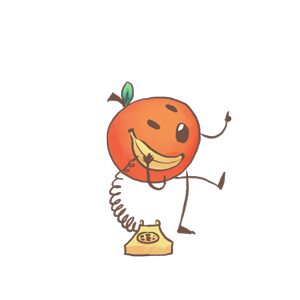
A low fat diet plan is one where fewer than 30% of total calories come from fat. According to the National Institute of Health, there is a consensus among doctors that the average diet should have less fat, to reduce heart disease and death.
Fats are one of the three essential macronutrients, but they must be consumed in a limited amount. There are four types of dietary fats. Saturated and trans fats are solid at room temperature. Monounsaturated and polyunsaturated fats are liquid at room temperature. The latter two fats are considered more beneficial as they reduce bad cholesterol levels, but all should be limited. A gram of fat contains far more calories than a gram of carbohydrates or protein.
Staple foods on a Low Fat Diet Plan
Common low-fat diet plan foods include vegetables, fruits, whole grain cereals, egg whites, chicken and turkey breast without the skin, beans, lentils, peas, tofu, seafood and low-fat dairy. Limit egg yolks to just a few times a week, and if you eat red meat, eat no more than three servings per week. Plant-based foods should be the majority of your calories on a low-fat diet.
Foods to avoid on a Low Fat Diet Plan
- Limit total intake of fats and oils.
- Avoid butter, stick margarine, shortening, lard, palm and coconut oils.
- Limit mayonnaise, salad dressings, gravies and sauces, unless they are homemade with low-fat ingredients.
- Limit chocolate.
- Choose low-fat and nonfat products, such as low-fat mayonnaise, low-fat or non-hydrogenated peanut butter, low-fat or fat-free salad dressings and nonfat gravy.
- Use vegetable oil, such as canola or olive oil.
- Look for margarine that does not contain trans fatty acids.
- Use nuts in moderate amounts.
- Limit saturated and trans fats.
- Avoid high-fat processed and convenience foods.
- Avoid fatty meats, such as bacon, sausage, franks, luncheon meats and ribs.
- Avoid all organ meats, including liver.
- Avoid cream and sauces made with cream.
- Avoid high-fat snack foods, such as granola, cookies, pies, pastries, doughnuts and croissants.
Pros & Cons of the Low Fat Diet Plan
Benefits of the Low Fat Diet Plan
The low fat diet plan is broadly recommended by doctors across all disciplines for its ability to reduce mortality and dangerous health conditions such as hardening of the arteries and heart disease. According to the National Institute of Health, multiple studies across many countries have shown a direct link between high-fat diets and health problems.
Downsides of a Low Fat Diet Plan
One of the concerns about the proliferation of low fat diet plans are unscrupulous companies who simply replace fat with more sugar. Low fat doesn’t necessarily mean healthful. Twizzlers, for example, is a product that is 100% sugar, but advertises that it is “low fat.” That doesn’t make it a diet food.
Nutrition on a Low Fat Diet Plan
Read ingredient labels carefully to determine both amount and type of fat present in foods. When cooking, avoid deep-fried foods, trim all visible fat from meats and remove skin from chicken and turkey when cooking. Rather than frying, bake, broil, poach or roast. Steam vegetables, and use herbs and no-oil marinades to flavor foods. Opt for cooking sprays to grease pans and skillets.
What is the High Protein Diet Plan, and why follow it?

The High Protein Diet plan falls under the umbrella of the many low-carb diets. High protein diet plans encourage eating more protein and fewer carbohydrates and fat to boost weight loss, build muscle and improve energy.
Protein is essential for life – it's a building block of every human cell and is involved in the vital functions of the human body. It's particularly important in growth, development, and tissue repair. Along with carbohydrates and fat, protein is one of the three major macronutrients. High protein diets have existed for all of human history, both because of tradition and out of necessity. Some examples of high protein diet plans include the Atkins Diet Plan, South Beach Diet Plan and Mediterranean Diet Plan.
A traditional macronutrient ratio is about 50% carbohydrates, 30% fat and 20% protein, with about 10% of overall calories coming from protein. With a high protein diet plan, the ratio of carbohydrates may drop to 37% or less, and at least 20% of calories come from protein. A difference between a basic high protein diet plan and the ketogenic diet plan is that followers of the keto diet plan get the bulk of their calories from fat.
Staple foods on a High Protein Diet Plan
What are considered the core foods of a high protein diet plan? Some basic categories include:
- Nuts and seeds
- Vegetables
- Fish such as tuna, mackerel and salmon
- Oils derived from fruits and nuts, such as olive oil or walnut oil
- Fruits
- Meat, especially from grass-fed animals or game animals
- Eggs
Some more specific examples of foods that are OK for the high protein diet include:
- Turkey, quail, goose, chicken, and duck
- Beef, lamb, pork, nitrate-free bacon, elk, bear, deer, moose, and rabbit
- Catfish, tuna, salmon, trout, bass, walleye, mackerel, cod, clams, lobster, crab, mussels, and shrimp
- Nuts and nut butters, including almonds, cashews, hazelnuts, walnuts, and brazil nuts
- Eggs
- Healthy fats from sources such as avocados, olive oil, coconut oil, and butter/ghee from grass-fed cows
- Cauliflower, broccoli, lettuces, carrots, peppers, cucumber, radishes, squashes, olives, and mushrooms
- Apples, peaches, bananas, berries, melons, tomatoes
- Water. People on a high protein diet plan will need to drink more water, as excess
protein is processed through the kidneys.
Foods to avoid on a High Protein Diet Plan
The biggest foods to avoid on a high protein diet plan are heavily processed carbohydrates, especially when they come paired with fats. This means cutting out the white bread, white rice, and foods with lots of sugar or corn syrup. Total carbohydrates are reduced on a high protein diet plan, but not gone entirely. So put down the cake, but whole grain bread and brown rice is OK.
Pros & Cons of the High Protein Diet Plan
Like many weight loss plans, a high protein diet plan has its benefits and drawbacks.
Benefits of the High Protein Diet Plan
The extra protein can make meals more satisfying than on a more traditional weight loss plan. After all, most people would rather eat steak than brussel sprouts or kale. Protein is essential in building and maintaining muscle, so a high protein diet plan gets an extra boost if you exercise regularly. Especially with the recent popularity of high protein diet plans, there’s a wide variety of healthful options. The satiety from including protein in your meals and snacks can help you feel full, which helps with portion control.
A high protein diet plan is also less severe than a ketogenic diet plan or paleo diet plan. This means it’s easier to follow and stick with. You’re not putting your body into a state of ketosis like in a keto diet plan, and whole grain wheat and rice are still on the menu, unlike a paleo diet plan.
Downsides of a High Protein Diet Plan
There is a limit to how much protein a person should eat. As with much in life, there can be too much of a good thing. Eating excessive protein can put someone at a higher risk for kidney stones. Also, a high protein diet plan with lots of red meat and saturated fat can lead to a higher risk of heart disease or colon cancer. A high protein diet plan with lots of plant-based protein may not have the same risk, however.
Take care not to have any nutrient deficiencies. High protein diet plans can sometimes lack enough fiber, which will cause constipation or other health issues. Fiber protects against inflammation and cancer.
People with kidney disease should talk to a doctor before embarking on a high-protein diet because of the extra strain it puts on the kidneys, and the risk of kidney stones. Excess protein is excreted through the kidneys.
Nutrition on a High Protein Diet Plan
A high protein diet plan typically requires eating protein at every meal. This could include lean beef, chicken or pork and lots of vegetables. It could also mean supplementing with protein shakes, especially after a workout.
Followers of a high protein diet plan will also want to avoid overly processed carbohydrates such as white rice, pasta and bread. When possible, opt for carb substitutes such as riced cauliflower, zoodles (zucchini spirals) or something similar.
Got the urge to snack? High protein diet plan followers will grab snacks such as almonds, Greek yogurt, hummus or cheese.
Breakfast is a great time to dive into high-protein foods. Eggs and bacon, or a protein powder smoothie is a good way to start the day.
What is the Gluten Free Diet Plan, and why follow it?
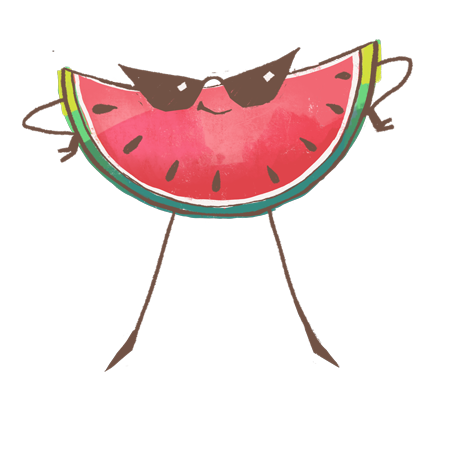
Sidestepping gluten can be a lifestyle choice for many, but for those with a condition known as celiac disease, it’s a medical necessity. As the name implies, followers of the gluten free diet plan avoid all food with gluten. Gluten is a protein found in wheat, barley, rye and oats. These are ingredients common in staple foods such as breads, pastas and desserts.
People may follow a gluten free diet plan for several reasons:
- Celiac disease. People with this condition cannot consume gluten because it triggers an autoimmune response that damages their gastrointestinal tract, causes inflammation and makes it hard for the body to absorb nutrients in food. Symptoms of celiac disease also include bloating, constipation and diarrhea.
- Gluten sensitivity/intolerance. People with this condition don’t have celiac disease, but experience some of the other symptoms.
- Other people go on a gluten-free diet plan, because they believe it can help with other health problems, such as headaches, depression, chronic fatigue and weight gain.
Staple foods on a Gluten Free Diet Plan
Many foods are naturally gluten free, such as:
There are other grains and starches that are gluten free, some more common than others:
There are also gluten free versions of bread, flour and so on, usually made with rice flour.
Foods to avoid on a Gluten Free Diet Plan
The off-limit foods on the Gluten Free Diet Plan are fairly simple: No wheat, barley (this includes malt, malt flavorings and malt vinegar), rye, or triticale (a grain similar to wheat and rye).
These foods also contain wheat, which must be avoided:
- Bulgur
- Couscous
- Durum flour
- Farina
- Graham flour
- Kamut
- Semolina
- Spelt
Some example foods that will have to be avoided if following the gluten free diet plan include:
- Bread and other baked goods
- Pasta
- Cereal
- Beer
- Soy sauce
- Deep-fried or battered foods
- Many packaged foods
- Some medicines use gluten to bind ingredients together
- Many sauces and marinades
Benefits of the Gluten Free Diet Plan
For individuals with celiac disease, a gluten free diet plan is the only way to control the disease. There is no cure or medicine that can prevent symptoms. Eating gluten will damage the intestines. For people with sensitivity issues, avoiding gluten will also stop related symptoms. The gluten free diet plan is a very specific diet plan aimed at preventing specific symptoms. It can be paired with many other diet plans if the goal is weight loss.
Downsides of a Gluten Free Diet Plan
- Calcium
- Fiber
- Folate
- Iron
- Niacin
- Riboflavin
- Thiamin
If you’re on a Gluten Free Diet Plan, make sure to eat a variety of healthful foods to get proper nutrition.
Nutrition on a Gluten Free Diet Plan
The first step in dieting to lose, maintain or gain weight is to calculate your TDEE (total daily energy expenditure) based on your current weight and exercise level. If your body burns 2,000 calories a day, then consistently eating fewer calories than that will help you lose weight, and eating more calories will cause you to gain weight.
Food is divided into three main macronutrients, all of which contain calories: Protein, carbohydrates and fat. Every diet plan needs to have a suitable amount of each of these three macronutrients. For a Gluten Free Diet Plan, a standard macronutrient ratio is 10-35% protein, 45-65% carbohydrates and 20-35% fats.
Other diet types
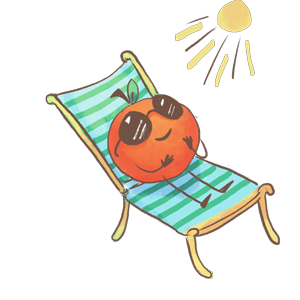
Eat This Much doesn't have preset diets for any of the following diet types, but it will be possible to configure our generator to work with most of them using the Preferences pages (accessible when you're logged in with a free or premium account).
Alkaline diet plan
The premise behind the alkaline diet plan is that some foods, such as wheat, refined sugar and processed foods cause your body to produce acid, which is bad for you. Therefore, eating foods that make your body more alkaline will protect you and help you lose weight. The alkaline diet plan is mostly vegetarian, as fruits, vegetables, soybeans and tofu are alkaline-promoting foods, while dairy, eggs, meat, most grains and processed foods are acid-promoting foods. Regardless of its pH-balancing premise, the acceptable foods are all quite healthy to eat, with its focus on fruits and vegetables.
Atkins Diet
The Atkins Diet is/was one of the most popular low-carb, high-fat, high-protein diet plans. It promotes eating lots of meat, cheese, eggs and foods like butter, mayo and sour cream, but recommends avoiding bread, cereals and pasta. It's very similar to following a Ketogenic diet, but follows several phases from week to week. You can change Eat This Much settings from week to week to match
Body Builder diet
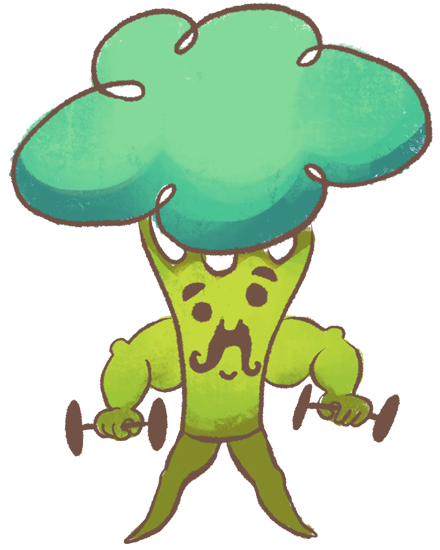
Bodybuilding is focused around growing your body’s muscles through a combination of lifting weights and nutrition. Bodybuilders go through extreme exercise and aim for a specific lean, muscular physique. Body builders eat a high calorie, high protein diet and lift weights intensely to bulk up on muscle, then before competitions, attempt to cut fat drastically. This is a specialized type of diet plan, but the Eat This Much menu creator can be customized to match whatever your macro and calorie targets are.
Eating big to build muscle typically requires a lot of food, and it can help to have more repetition in your meals to make cooking less of a chore. Check out ETM's "Recurring Foods" features to pin similar foods in specific meals, either "often" or "always".
FODMAP diet
The FODMAP diet plan is a niche diet plan specifically focused on improving digestion and reducing the symptoms from conditions such as irritable bowel syndrome (IBS). Restricting certain foods can improve digestion of people sensitive to those foods. FODMAP stands for fermentable oligo, di-, mono-sacharradies and polyols. These are terms for types of carbohydrates that can trigger bloating, gas and stomach pain. In short, people following the FODMAP diet are encouraged to avoid eating wheat, rye, legumes, garlic, onions, lactose-containing products like milk and cheese, fructose-containing foods such as figs, mangoes and honey, fruits like blackberries and lychee, and low-cal sweeteners like those in sugar-free gum. The FODMAP diet has been proven to reduce digestive symptoms and can help manage flatulence, diarrhea and constipation.
You can easily exclude any category of foods you like using Eat This Much's Preferences page. You'll probably want to set the diet type to "Anything", and then exclude individual categories in the list of exclusions, and you can add custom keywords if you don't see what you want to exclude.
Carnivore diet

The carnivore diet plan consists of, like its name implies, eating entirely meat and animal products, excluding all other foods. While there are cultures and times when people have eaten almost nothing but animal products (such as certain tribes eating almost solely meat, fat, blood and milk), this is a highly restrictive diet that is lacking in numerous micronutrients as well as fiber. Other low carb diets, such as the keto and paleo diets, also limit carbohydrates, but they don’t restrict them entirely.
Clean eating diet plan
A clean eating diet plan is one where the food is as close to its natural state as possible. That means making meals from scratch and avoiding foods with artificial flavors, dyes and high fructose corn syrup. Clean eating diet plans will focus on whole, unprocessed foods such as fruits, veggies, whole grains and lean proteins. Clean eating doesn’t mean denying yourself good-tasting food, but focusing on nutritious, natural foods.
DASH diet
The DASH (Dietary Approaches to Stop Hypertension) diet plan is a healthy-eating diet plan designed to treat high blood pressure. This means eating foods rich in potassium, calcium and magnesium, and limiting foods high in sodium/salt, saturated fat and sugar. The daily recommended intake of salt on the DASH diet plan is about 1 teaspoon daily, which is also the amount recommended by the American Heart Association. The DASH diet plan focuses on vegetables, fruits, whole grains and low-fat products such as fish, poultry, beans and nuts.
You can set a limit on sodium in ETM's nutrition targets (at the bottom of the customization form, you'll want to hit "Show micronutrient targets".
Dr. Nowzaradan diet plan
Nowzaradan, also known as Dr. Now, is a surgeon specializing in gastric bypasses and lap bands and was featured on the TLC show “My 600 lb. Life,” a reality show that tracks the weight-loss journey of morbidly obese individuals. Dr. Now puts the patients on the show onto a strict 1,200 calorie diet plan focused around balanced foods, but a reduced caloric intake. Dr. Now’s low-calorie diet plan is focused on eating a low-carb, low-fat, high-protein, high-vitamin meal that has all the nutrients the body needs, but few calories.
Golo diet plan
The Golo diet plan, also known as the Golo Metabolic Plan, is a trademarked diet plan that involves eating a 1300-1500 calorie diet plus taking a dietary supplement. The plan hinges on making your metabolism “more efficient.” It also targets insulin resistance, in an attempt to get the body to release stored fat. The Golo plan prioritizes eating good-for-you foods such as fruits, vegetables, lean proteins, nuts and whole grains.
HCG diet
HCG stands for human chorionic gonadotropin, a hormone produced during pregnancy. HCG is a prescription medication used to treat fertility issues, is not approved for over-the-counter use and has not been proved to work for weight loss. HCG carries an FDA label stating this as well, and over-the-counter HCG products are illegal.
Heart healthy diet plan
A heart-healthy diet plan is a low-sodium diet full of fruits, vegetables, whole grains and lean meats. It’s going to be very similar to the low-fat diet plans, with an added emphasis on reducing sodium intake. People who are at risk of our have experienced heart issues would definitely want to look into this type of diet.
Herbalife diet plan
Herbalife is a multilevel marketing company that sells nutritional supplements and personal care products. One of their products is the Herbalife weight loss program, which uses meal replacement shakes and dietary supplements to help people lose weight. Herbalife products can be obtained from an Herbalife independent distributor. On the Herbalife diet plan, the shakes replace two meals a day and take the supplements with the plan. Soy-based meal-replacement shakes can be useful for people on the go who need to make sure they get enough nutrition.
Intermittent Fasting
Intermittent fasting diet plans are eating patterns that have people cycle between periods of fasting and eating. It doesn’t specify any foods in particular that you should eat, but instead about when they should be eaten. Intermittent fasting commonly involves daily 16-hour fasts or 24-hour fasts twice per week, an idea based loosely on how ancestral hunter-gatherers may have had to go long periods without food. Fasting can also be done for religious or spiritual reasons, including in Islam, Christanity, Judaism and Buddhism.
Macrobiotic
The macrobiotic diet plan is a pescatarian (vegetarian + eating of fish) diet plan based on eating organic, locally grown whole grains, vegetables and beans. The ideal breakdown is 60% whole grains, 30% vegetables and 10% beans, tofu and seaweed, along with fresh seafood one to three times a week. Rice syrup is the only recommended sweetener, and herbs, not salt other spices, are advised for flavoring. The macrobiotic diet plan also involves eating lots of body-temperature soups.
Mayo clinic diet plan
The Mayo Clinic diet plan is a lifestyle approach to long-term weight management, created by the Mayo Clinic. In addition to specific foods, it also includes behavior changes, such as setting achievable goals, handling setbacks and improving motivation. The Mayo Clinic diet plan is based on research and clinical trials, focused on healthy foods such as fruits, vegetables, lean meats and whole grains, as well as physical activity.
Medifast diet plan
The Medifast diet plan involves eating one of the company’s more than 70 meal replacements and works by restricting calorie intake. On the plan, people cook one meal a day for themselves and replace the other meals with a Medifast meal. Costs vary, but a 4-week supply of replacement meals is several hundred dollars. Meal replacements are often shakes, smoothies or oatmeal bars, and involves eating 800 to 1000 calories a day.
Military
The military diet plan is a heavily restrictive low-calorie diet that is followed for three days, followed by regular eating for four days. The diet is high in protein and low in fat, carbs and calories and doesn’t seem to have anything in common with how soldiers eat. The foods eaten on the military diet are quite restrictive and specific. The military diet is a quasi intermittent fasting diet because of the alternating calorie restrictions.
Noom
The Noom diet plan is a psychology-based diet plan that aims to better people’s eating habits rather than restricting particular foods. Noom is a weight-loss app where users record their height, weight, gender, age, health info and other aspects of their life, then all snacks and meals are logged. Being hyper-aware of food intake can be useful in eating less, and the app gives feedback on food choices and makes recommendations to help you eat better and reach your target weight. Exercise is also logged, and the app automatically counts your steps.
Eat This Much is also an app, but they're not mutually exclusive. Eat This Much does more to help you figure out what to eat and streamline the work that goes into feeding yourself. If you need more help adjusting your mindset around eating, you may find Noom helpful.
Plant Based

A plant based diet plan can be very beneficial. There is a lot of scientific evidence that shows plant-based diets improve heart health and can prevent major illnesses and chronic disease, as well as reducing inflammation. A plant based diet is essentially a vegan diet, but also recommends avoiding heavily processed foods. As an example, Oreos are technically a vegan product, but also heavily processed and probably not conducive to weight loss.
South Beach diet plan
The South Beach diet plan is a popular commercialized, modified low-carb diet created in 2003 by a cardiologist. You might want to follow the South Beach diet plan if you enjoy the foods featured in the diet, or if you feel it’s a diet you can stick with in the long-term. There are also variations, such as a keto South Beach diet plan. Part of the diet plan also involves avoiding specific fats and emphasizes the benefit of fiber and whole grains, along with eating lots of fruit and vegetables.
Thrive diet plan
The thrive diet plan is a raw, vegan lifestyle plan created by pro athlete Brendan Brazier. Plan participants don’t count calories or limit portions, but instead eat several small meals daily to keep their blood sugar and energy levels constant. Foods eaten on the thrive diet plan are raw or minimally cooked at low temperatures — as close to their natural state as possible. Foods on the plan include beans, seeds, leafy greens, vegetables, fruit, hemp, cold-pressed oils, seaweed and brown rice.
Weight watchers
The Weight Watchers diet plan is one of the most popular weight-loss programs in the world, with hundreds of thousands trying it yearly. Weight Watchers assigns point values to food based on their calorie, fat, protein and sugar contents, and then those points are counted. No foods are off limits, instead dieters must stay below their total daily points. For example, a 230-calorie donut is 10 points, but 230 calories of yogurt is only 2 points. Weight Watchers members also get 24/7 chat support, an app, in-person group meetings and one-on-one support, as well as meal replacement options and pre-packaged foods.
Whole30 diet plan
On the Whole30 diet plan, you eat certain whole foods for 30 days. The Whole30 diet is an elimination diet. By not eating foods that might contain common allergens or trigger inflammation, you see how your body responds. That means no cheating is allowed — the program must be followed to the letter for 30 days. After 30 days, you start systematically reintroducing the forbidden food groups, paying attention to how you feel, so that any foods that trigger allergic responses or inflammation can be eliminated. The Whole30 diet plan is not designed to be a weight-loss plan, at least not as the main goal. The Whole30 diet plan is an option if you suspect the food you are eating is negatively impacting your health.
Daniel plan
The Daniel Fast diet plan is based on the Biblical book of Daniel. It involves a 21-day period where no animal products are eaten. Instead, eat fruits, vegetables, whole grains, legumes, nuts and seeds. The Daniel Fast is similar to a vegan diet, except more restrictive, avoiding also sweeteners, white flour, alcohol and caffeine. The concept of the Daniel Fast comes from Daniel 1:8-14 (NIV), "But Daniel resolved not to defile himself with the royal food and wine, and he asked the chief official for permission not to defile himself this way. Now God had caused the official to show favor and sympathy to Daniel, but the official told Daniel, 'I am afraid of my lord the king, who has assigned your food and drink. Why should he see you looking worse than the other young men your age? The king would then have my head because of you.' Daniel then said to the guard whom the chief official had appointed over Daniel, Hananiah, Mishael and Azariah, 'Please test your servants for ten days: Give us nothing but vegetables to eat and water to drink. Then compare our appearance with that of the young men who eat the royal food, and treat your servants in accordance with what you see.' So he agreed to this and tested them for ten days." Other Biblical translations replace the word "vegetables" with "pulse", which indicates "food grown from seed".
Yes You Can
The Yes You Can diet plan is a weight loss plan that uses meal replacement shakes and dietary supplements, similar to the Herbalife diet plan. The supplements include green tea extract, various herbs designed to suppress appetite, bovine collagen, and probiotics. It also includes a wristband to snap yourself with when having negative thoughts about food. The Yes You Can shakes are low in calories and high in protein.
Diet Plans by Calorie Amounts
Generate diets and meal plans for any calorie number or macronutrient target you can think of. Below are a wide range of calorie targets, with various preset diets to get you started.